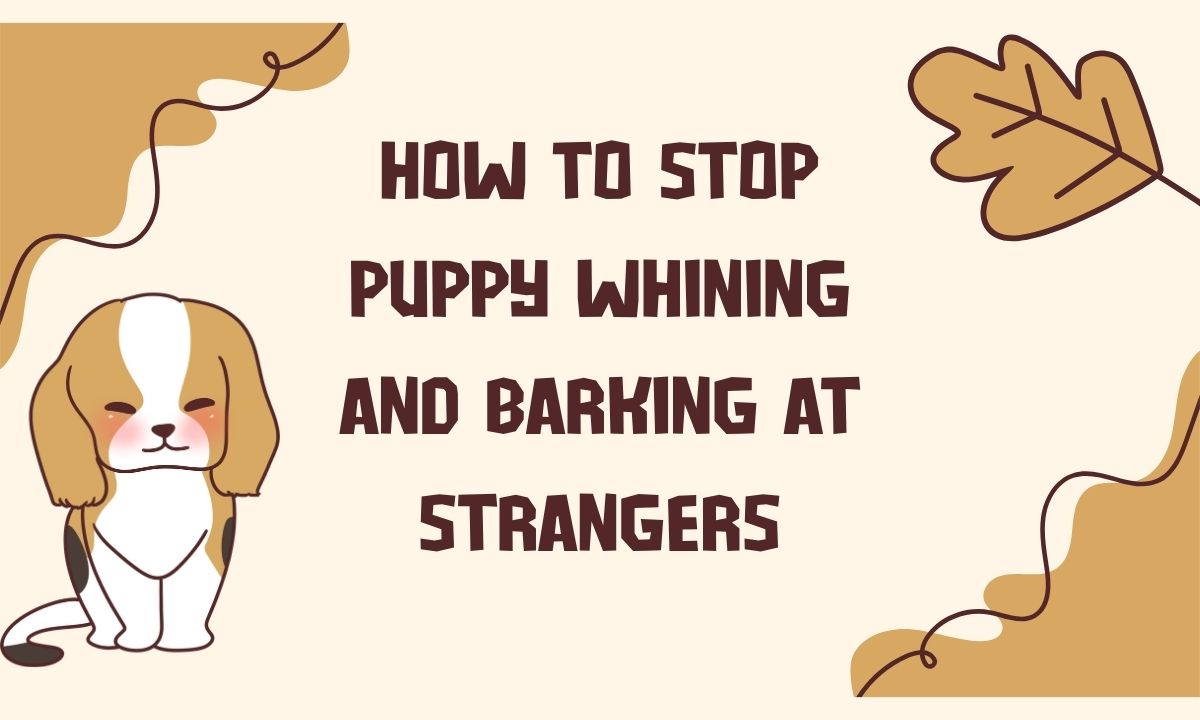Bringing home a new puppy is one of life’s greatest joys — their energy, playfulness, and boundless affection make every day brighter. But when your adorable puppy starts whining or barking excessively at strangers, it can quickly become stressful and confusing. This behavior is common among young dogs and usually stems from fear, insecurity, excitement, or lack of socialization. The good news is that with the right approach, you can teach your puppy to remain calm and confident around unfamiliar people. In this article, we’ll explore why puppies bark or whine at strangers and how to gently train them to stop through trust, patience, and consistency.
Understanding Why Puppies Bark and Whine at Strangers
Before solving the problem, it’s important to understand why it happens. Puppies bark or whine as a form of communication. When meeting strangers, they might feel scared or overstimulated. Some puppies bark to warn their owners, while others simply express excitement. Insecurity, lack of exposure, or negative past experiences can also contribute. Recognizing the cause helps you address the behavior effectively. Remember, your puppy isn’t being “bad” — they are expressing emotion. Training should always focus on building confidence, not fear.
Early Socialization Builds Confidence
One of the most effective ways to prevent excessive barking or whining is early socialization. Introduce your puppy to a variety of people, places, and sounds during their early weeks of life. Gradual exposure teaches them that strangers are not a threat. Start by inviting calm, friendly visitors to your home. Allow your puppy to observe from a distance before approaching. Praise them when they remain calm. Over time, your puppy will begin associating new people with positive experiences. The more exposure they get in safe, controlled environments, the less reactive they will become to unfamiliar faces.
Staying Calm During Encounters with Strangers
Your own energy plays a powerful role in how your puppy behaves. Dogs are extremely sensitive to human emotions — if you appear nervous or tense, your puppy will sense it and mirror your anxiety. When encountering strangers, remain relaxed and confident. Speak softly to your puppy and avoid tugging on their leash or scolding them for barking. If you show calm assurance, your puppy learns there’s no reason to be afraid. Over time, this sense of calmness will transfer to your dog, helping them feel more secure in unfamiliar situations.
Teaching the “Quiet” Command Effectively
Training your puppy to respond to the “quiet” command can make a huge difference. Choose a calm setting where distractions are minimal and wait for your puppy to start barking. Once they pause, gently say “quiet” in a firm but soothing tone. The moment they stop barking, reward them with praise or a small treat. Repetition reinforces understanding. Never yell or punish them for barking — this can increase stress and make the problem worse. Consistent, positive reinforcement helps your puppy learn that being quiet leads to positive outcomes, while barking yields no reward.
Gradual Desensitization to Strangers
If your puppy consistently reacts negatively toward strangers, desensitization training can help. Begin by exposing your puppy to strangers at a comfortable distance where they remain calm. Let them observe quietly while rewarding good behavior. Gradually reduce the distance over time, allowing your puppy to approach at their own pace. The goal is to help them associate strangers with calmness rather than fear or excitement. Avoid overwhelming your puppy by forcing interactions. Patience is key — progress may be slow, but each small step builds lasting confidence and trust.
Building Positive Associations Through Reward-Based Training
Creating positive associations with strangers is essential to changing your puppy’s perception. Encourage friendly interactions with calm, gentle people who are willing to help in training. When your puppy stays quiet or behaves calmly around them, immediately reward with treats or affection. Over time, your puppy learns that strangers bring good things — not fear or tension. This shift in emotional response is one of the most powerful ways to eliminate excessive barking or whining. Remember that every dog learns at their own pace, so consistency and patience will pay off in the long run.
Managing Overexcitement and Fear Responses
Some puppies bark or whine because they are overly excited rather than scared. In these cases, teaching impulse control is important. Avoid greeting strangers while your puppy is overly stimulated — wait until they calm down. Likewise, if your puppy is fearful, don’t force interaction. Comfort them gently and let them observe from a safe distance. Pushing them too fast can make fear worse. Encourage calm behavior through soft praise and relaxed energy. Over time, your puppy will learn that calmness leads to positive attention, while excessive excitement or fear results in neutral responses.
When to Seek Professional Help
In most cases, consistent training and positive reinforcement resolve barking or whining issues. However, if your puppy’s behavior doesn’t improve or seems to stem from deep fear or trauma, it may be time to consult a professional trainer or animal behaviorist. They can evaluate your puppy’s behavior patterns and create a personalized training plan. Professional help ensures you’re using the right techniques for your dog’s temperament and can prevent long-term behavioral problems. Addressing the issue early helps your puppy grow into a well-adjusted, confident adult dog who feels secure in any environment.
Final Thoughts
Dealing with a puppy that whines or barks at strangers can be challenging, but it’s also an opportunity to strengthen your bond and communication. Every bark is a message, and through understanding and guidance, you can teach your puppy to feel safe and calm. Focus on patience, positive reinforcement, and consistency — not punishment. Over time, your puppy will learn that strangers are nothing to fear and that calm behavior is always rewarded. With love and steady training, your once-anxious pup will grow into a confident, well-behaved companion who greets the world with curiosity instead of fear.

